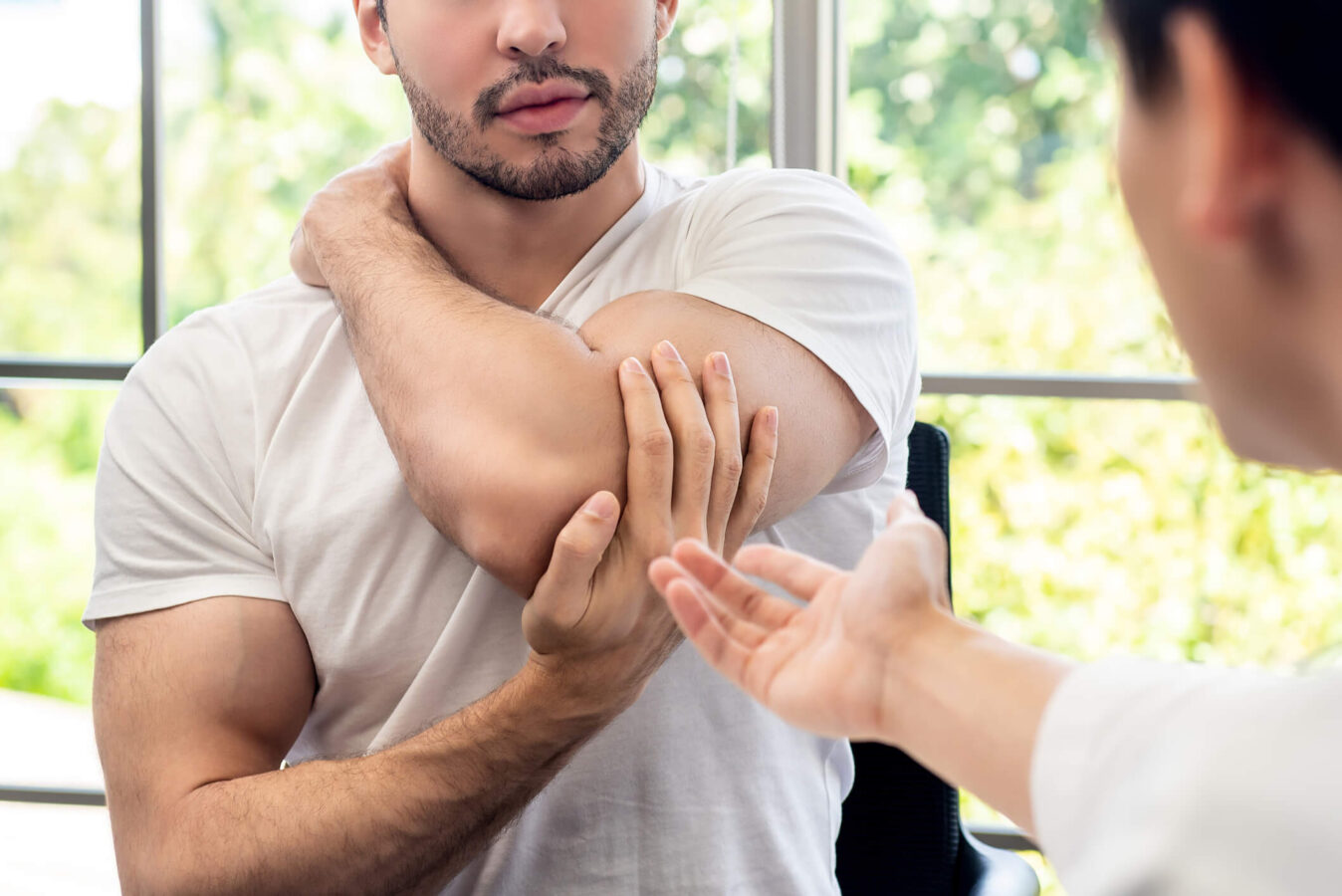
Whether you play for fun and exercise, or you go hard on a competitive level, all sports come with a risk of injuries. A serious sports injury is not only painful, but it can sideline you from your favorite activities for days, weeks, or even permanently. Fortunately, you can take steps to prevent musculoskeletal problems and continue being active at every age and stage of life. Here are the most common sports injuries to be aware of.
Working with athletes is “par for the course” for most physical therapists. They can help you move and perform better during the season, or create a treatment plan to rebuild strength and function after a setback. Here are some of the most common injuries in sports that physical therapists treat.
Sprains are tears or overstretching of the fibrous connective tissues (ligaments) that connect bones to each other at joints. Direct impact, twisting, or a fall can cause a sprain. Wrist, knee, and ankle sprains are common in sports.
The anterior cruciate ligament (ACL) which stabilizes the knee joint is a frequent site of tears among sports that require sudden changes of direction: soccer, basketball, football, and lacrosse for example. Signs and symptoms of a sprain include: pain, swelling, bruising, and difficulty moving the joint. In some cases, you might feel or hear a distinct “pop” when a tear occurs.
Strains are tearing or overstretching of the muscles or the connective tissues (tendons) that attach muscle to bone. They can occur suddenly due to twisting or pulling, or develop on gradually over time.
Sports-related activities are a leading cause of strains. Treatment for the pain, swelling, and mobility problems associated with strains generally involves rest, immobilization, and the gradual reintroduction of safe and gentle exercise through physical therapy.
A fall or blow to the body, as in contact sports, can push the ends of the bones out of place. It’s possible to dislocate your fingers, toes, ankles, knees, hips, elbows, shoulders, and even the jaw. Anyone with a suspected dislocation should seek immediate medical care. Treatment depends on where and how severe the injury is. Most joints move and function normally once they are properly repositioned.
A fracture is a break in any of the bones of the body. Some fractures are linked to diseases like osteoporosis that weaken the bones. Sports-related fractures occur from repeated stress on a certain part of the body—or from a sudden, one-time trauma.
Fractures vary in type, severity, and treatment. Stress fractures are common in sports that involve frequent impact, particularly to the weight-bearing bones of the lower body. People who play tennis, basketball, and soccer, or run track and field are at risk of stress fractures in the lower legs and feet.
With compound fractures, the bone breaks through the skin. In a closed or simple fracture, the bone breaks but the skin remains intact. Pain, swelling, bruising, numbness, difficulty moving a limb, and obvious deformity may indicate a fracture.
The knees are among the largest joints in the body. They are also highly prone to injuries. Damage to any of the ligaments, tendons, cartilage, or bones that form the knee can result in painful and debilitating injuries.
We’ve already mentioned some common knee injuries: sprains and strains, dislocations, and fractures. Runner’s knee is another common sports injury. This is not a single condition, but rather a group of conditions that cause pain in and around the kneecap.
In addition to knee pain, someone with runner’s knee, also known as patellofemoral pain syndrome, may experience grinding, clicking, or popping when they bend the knee. It is important to see your healthcare provider for knee pain and other symptoms to get an accurate diagnosis and prevent your condition from getting worse.
Elevation, rest, and bracing may be enough to help those with minor sports injuries of the knees feel better. Surgery is sometimes recommended to restore function for more severe knee injuries.
Physical therapy is especially beneficial for patients who are prone to knee pain or participate in activities that stress the knee joints. Stretching and strengthening the supporting structures help protect the knee joint and improve mobility and function for patients who play sports.
Tendinopathy is a broad term that encompasses a range of painful overuse-related conditions affecting the tendons. Our bones and tendons move as muscles contract and relax. Repetitive or high-exertion activities can result in micro-tears and inflammation (tendinitis) of the tendons or degeneration (tendinosis) of the collagen fibers over time.
In Latin- the term ‘-itis’ means inflammation. Most ‘tendinitis’ conditions last long past the inflammatory phase of healing making tendinopathy a more modern term you may see.
According to some estimates, more than half of all sports injuries involve the tendons. Common tendinopathies athletes experience include:
Pain and inflammation near the large bone (tibia) in the front of your lower leg may indicate shin splints. Shin splints are caused by overworking of the tendons, muscles, and bone tissue in this part of the body, often experienced when athletes suddenly change or intensify their physical activity. Shin splints are common in sports that require a lot of jumping and/or running.
Plantar fasciitis is inflammation or degenerative changes of the plantar fascia, the thick band of tissue that runs along the bottom of the foot and connects the toes to the heel bone. Plantar fasciitis (or plantar heel pain) is typically described as sharp or stabbing heel pain that is noticeably worse in the morning or after long periods of inactivity.
While the cause of this painful condition is not widely understood, we are aware of certain risk factors : excess weight, age (40-60), certain foot mechanics, and activities like long-distance running that place significant stress on the heels.
A concussion is one type of traumatic brain injury (TBI) caused by a heavy blow, bump, or jolt to the head. Concussions can also occur if the body is pushed with force in a way that causes the upper body to move quickly back and forth.
This motion causes the brain to shift inside the skull, causing certain chemical changes that are reflected in physical, emotional, and cognitive symptoms. Someone with a concussion may have issues with memory, concentration, and moods. Headaches are also common with a concussion, as are sensitivities to light and sounds.
While football is usually associated with high concussion rates, several other sports including soccer, wrestling, cheerleading, and ice hockey, also have a high incidence of concussions among student-athletes.
Throwing a ball, swinging a tennis racquet, or catching and tossing a lacrosse ball all require smooth and efficient bending and twisting of the spine. Poor posture, bad form, or overuse can lead to painful back injuries that come on suddenly or gradually and last for days, to weeks, to months. To successfully treat sports injuries of the back, your therapist and healthcare provider must determine the underlying cause and identify which structures of the back are damaged, inflamed, or degenerated.
Don’t let these common sports injuries deter you from staying active and pursuing the activities you enjoy. After all, the benefits of physical fitness and regular exercise for our mental and physical health and wellness are undeniable. The good news is sports injuries are largely preventable. Here are some simple, practical strategies to reduce your risk of injury:
Our list of the most common injuries in sports represents just a fraction of the many conditions physical therapists diagnose, treat, and prevent. If you play sports and are experiencing symptoms of a sports injury—or want to take proactive steps to avoid one—talk to your healthcare provider and schedule a physical therapy screening today. Find a physical therapy clinic near you.

